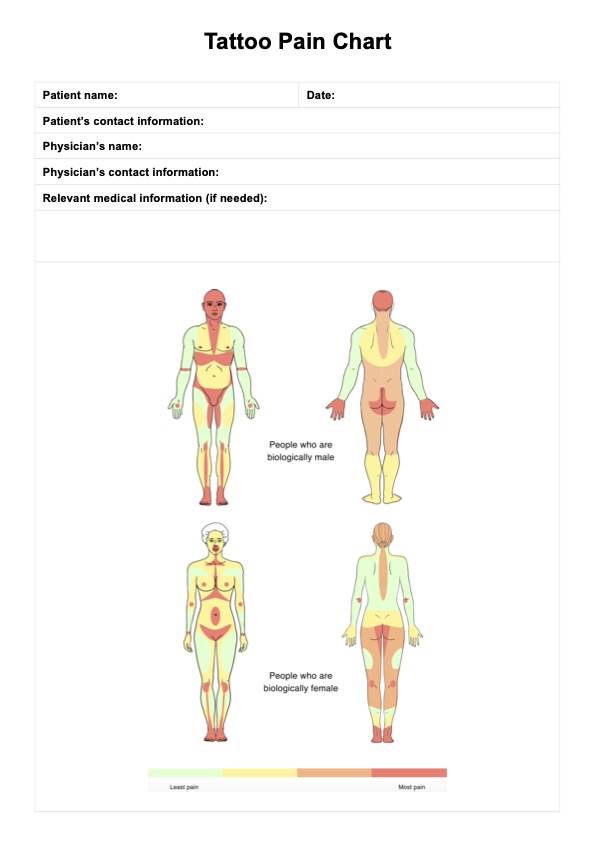Patients planning to get a tattoo and medical practitioners specializing in caring for their skin, such as dermatologists, can use our Tattoo Pain Chart.

Tattoo Pain Chart
Provide patients with a Tattoo Pain Chart to help them make decisions and determine if their post-tattoo pain is due to an adverse reaction.
Use Template
Tattoo Pain Chart Template
Commonly asked questions
The Tattoo Pain Chart can be used when deciding where to place the tattoo or after the dermatologist’s examination.
It can help a person determine where they can most likely ask for their tattoo to be placed based on their pain tolerance. It can also be used to determine if the patient's pain is natural or if there are signs of an infection or MRI burn.
EHR and practice management software
Get started for free
*No credit card required
Free
$0/usd
Unlimited clients
Telehealth
1GB of storage
Client portal text
Automated billing and online payments











